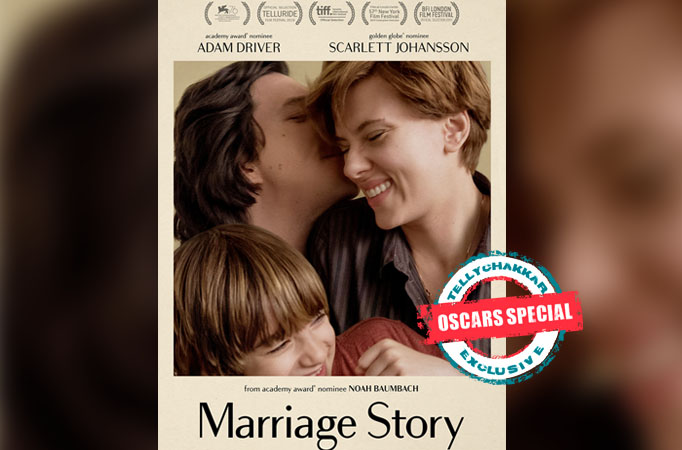
MUMBAI: The title says it all. This story about divorce proceedings of a couple---Scarlett Johansson as Nicole and Adam Driver as Charlie, can either be seen as a funny and sad love story without a happily ever after ending or a divorce story with actually a happy enough ending. Therein lies the complexities of character and the married world they have inhabited. Like Woody Allen’s movies, the film is entirely auteur driven by writer/director, Noah Baumbach.
It took me four attempts to watch the complete film. Had it not been on Netflix, I would probably have walked out in a theatre screening. The thing is I don’t want to watch an ugly court battle between a couple. Or sharky lawyers in hot suits and sexy hairdos, squeezing out their own pounds of flesh and hard earned money from the ego-blinded and deeply hurt spouses. They justify divorce with words like, “…what you are doing is an act of hope.” Of course, the client, in this case- Nicole looks completely lost and hopeless.
The very idea of what’s in store, is just too disturbing to visit. But then curiosity prevailed. The script has several memorable scenes, yet for me, they are not the two major ones widely discussed , namely, Johansson’s one take shot monologue or the intense fight scene between Nicole and Adam. Both felt too maneuvered, over written, over performed, over ‘staged’, like a play. It seemed like the director was blocking the scenes like a play. The arguments, the dialogues felt too theatrical. The famous fight scene makes you marvel at the actors, and the scene composition per se but not feel for them. Like a piece of column written by a great intellectual whose style or words may evoke admiration but may not stir any deeper emotion. Unlike Kramer vs Kramer. Both characters and their world, had a certain cold detachment in their treatment, which did not draw me in much.
However, much is there to be appreciated about Baumbach’s crafting of certain scenes. The opening scene was just exquisite and a great example of how a beginning should be written, something that introduces us to the main characters, make us fall in empathy, if not in love, with them and just when you are going somewhere with them, the scene turns around revealing the central conflict.
Charlie—the husband-- has a theatre company based in New York. The husband is a director, the wife is an actor. The wife has a universal grouch. She could never have her own real limelight. The essence here is that like most wives, she did not feel she existed— he didn’t know even her phone number-- and somewhere she lost herself while being a supportive wife who acted in her husband’s plays and perfected the roles of wife, mom and Charlie’s play’s actress who was vaguely recalled while the husband got all the accolades.
Despite her give it all attitude to his directorial demands like… “crawling but also standing…”. When finally she does manage to get something worthwhile in LA, he dismisses it. The wife’s side of the story is explained with lengthy talky scenes, shot in long, static close-ups which somehow fail to move as much as the husband’s side of the story seen through his struggling to comprehend the problem.Those are the real gems. One of them is the last scene and a perfect payoff to the opening scene.
Spoiler Alert.
Charlie is reading aloud a letter to his son. The letter is written by the wife talking about Charlie’s best attributes and how much she really loves him, in that odd way an embittered wife can still love her husband. As he reads, there is only a hint of an emotion in his voice or face. Then comes the hint of a presence of the wife at the doorway, listening. Then comes the shot of the little boy- their son, who at this tender age is witness to an actual breakdown—of a marriage, of his father reading the letter. Charlie stops reading, his chin quivering. His voice if one can call it that, is wet with unshed tears. And you as the audience and he, Nicole at the doorway, are one and all are weeping silently. No melodrama. Just utter sadness. It’s the end of what could have been a loving marriage. Would this scene have half the impact had it not started the way it did, at the beginning of the movie? Not likely. In the beginning, we hear the characters’ own voices as they describe each other in their letters written as part of a divorce mediation exercise, in front of a counsellor. The scene ends when Nicole refuses to read aloud her letter and storms out. Little did both realize that she had actually written a beautiful love letter where the words felt more raw, more honest, and Charlie is left more vulnerable at the end of it.
The simplicity of the scene is far more impactful than the dramatic end of the famous, intense fight scene which closes on a long shot showing Charlie at his most vulnerable, literally on his knees and sobbing uncontrollably at Nicole’s feet while she comforts him. By now, the focus has long shifted to Charlie’s tragedy from Nicole’s version. We continue to witness his torture. Here’s the actual crème of good writing and a scene involving a character who plays social worker/ ‘evaluator” (a superb Martha Kelly in a single scene) recruited to observe Charlie’s parenting skills over dinner. Kelly deserves an award as much for her silent reactions, her stiff and erect body posture relating to the awkwardness of the entire scene and her soft, yet subtly enquiring voice capturing the bizarreness of the situation that can leave you as helpless and angry and deeply sad just like the husband at the end of the scene, aptly lying on a floor, literally wounded in body and soul. Not to mention a dark humour ridden scenario thrown in, instigated by an innocent remark from his son, “Do the thing with the knife.” It can’t get any more uncomfortable for Charlie as the Evaluator’s object of scrutiny.
However, it gets more uncomfortable for the viewer as Charlie at one point breaks into a song. Shot in one take, Adam Driver outdoes himself as he sings …
“ ….Someone to hold me too close
Someone to hurt me too deep
Someone to sit in my chair
And ruin my sleep
And make me aware
Of being alive
Being Alive…”.
Despite all of Adam Driver’s heartrending moments and the intensely intimate drama, never moving away from the central two warring though confused people, it is a short and single surprise monologue delivered with finesse by Laura Dern, that is the real scene stealer.
Impeccable in her suit, hair and a sharp mind that can barely conceal long and hard claws, Dern’s lines are like a bolt of mad rage-- an almost impromptu one , not delivered at a court but as an outburst encompassing the grievances of a mother in today’s male centric world.
(Film critic and columnist, Gayatri Gauri, blogs on gayatrigauri.blogspot.com) and her twitter handle is @gayatri_gauri.)


















Add new comment